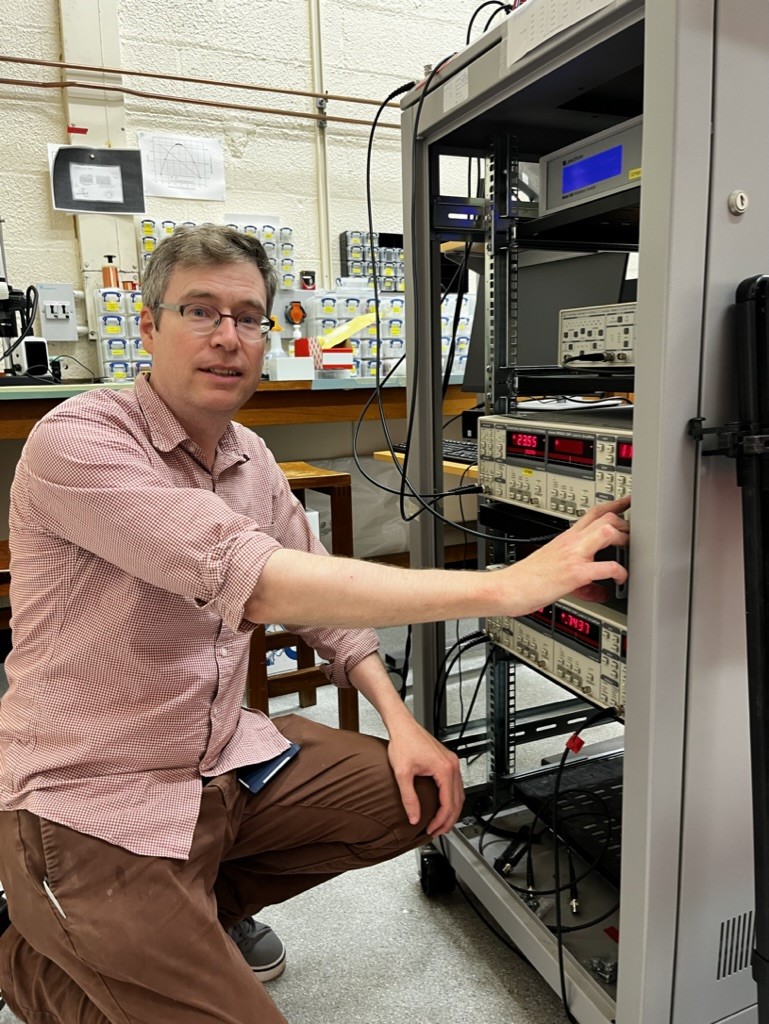 The Pippard prize is named in honour of Professor Sir Brian Pippard. It is awarded annually by the IOP Superconductivity Group to a scientist working in the UK who has made a significant recent contribution to the field of superconductivity. The winner is chosen by a panel of electors appointed by the IOP Superconductivity Group committee. Dr Goddard was a previous member of the IOP Superconductivity Group’s committee and is “happy to find his own research acknowledged in the same way as several of the people who inspired it in the first place.”
The Pippard prize is named in honour of Professor Sir Brian Pippard. It is awarded annually by the IOP Superconductivity Group to a scientist working in the UK who has made a significant recent contribution to the field of superconductivity. The winner is chosen by a panel of electors appointed by the IOP Superconductivity Group committee. Dr Goddard was a previous member of the IOP Superconductivity Group’s committee and is “happy to find his own research acknowledged in the same way as several of the people who inspired it in the first place.”
Dr Goddard began his career measuring transport properties of organic superconductors and used the 45 tesla hybrid magnet at the National High Magnetic Field Laboratory (NHMFL) in Tallahassee to demonstrate that Boltzmann transport models of electronic orbits on the side of a quasi-two- dimensional Fermi surface could be used to simulate the full array of AMR features observed in the data. He then applied his methods to underdoped cuprate superconductors to model the AMR undulations and reveal information about their fermiology. His most recent experiments in collaboration with Brad Ramshaw and Louis Taillefer and their teams at Cornell and Sherbrooke found that the Fermi surface changes close to the pseudogap transition. Analysis of the data revealed that the transport is in the extreme Planckian limit of scattering and yet the AMR results can apparently still be described using relatively simple transport models.
Dr Goddard’s current research examines materials that combine frustrated magnetism and electrical conduction. He intends to investigate materials that combine the ground states and exotic excitations of frustrated magnets with highly correlated electronic properties and expects the emergence of interesting and potentially useful new physics.
A frequent user at ISIS for his work on molecule-based magnets, Dr Goddard conducts his experiments using WISH and LET. “The experiments at WISH and LET have shown us details about the ground states and excitations of these materials that wouldn't otherwise have been uncovered and taught us a great deal about how molecules mediate magnetic exchange interactions,” Dr Goddard explains. “This has fed directly into new publications, new materials, and new avenues of research. Just as importantly, the ISIS work has provided important training for several generations of graduate students and been a key ingredient in their PhD theses.” Dr Goddard hopes his work in organic materials will contribute to important milestones in the creation of more efficient electronic and magnetic devices.
“I think molecules are highly likely to play a key role in the future of smaller, faster, and more efficient electronic and magnetic devices. Figuring out how molecules can be used to couple magnetic moments, to transfer electrons, and to underpin low-dimensional structures are important milestones along this road. Regarding the cuprate superconductors, these are among the most complex materials scientists have yet discovered, and so it is not that surprising that we have yet to fully grasp how they work. Research in this area has a clear end point: to determine how they are able to support high-temperature superconductivity and use this information to create materials with physical properties optimised for widespread application. The ability to transmit and store electricity without losing energy to dissipation is key to ensuring the future of our society. The energy and climate crises make it only more urgent.”
